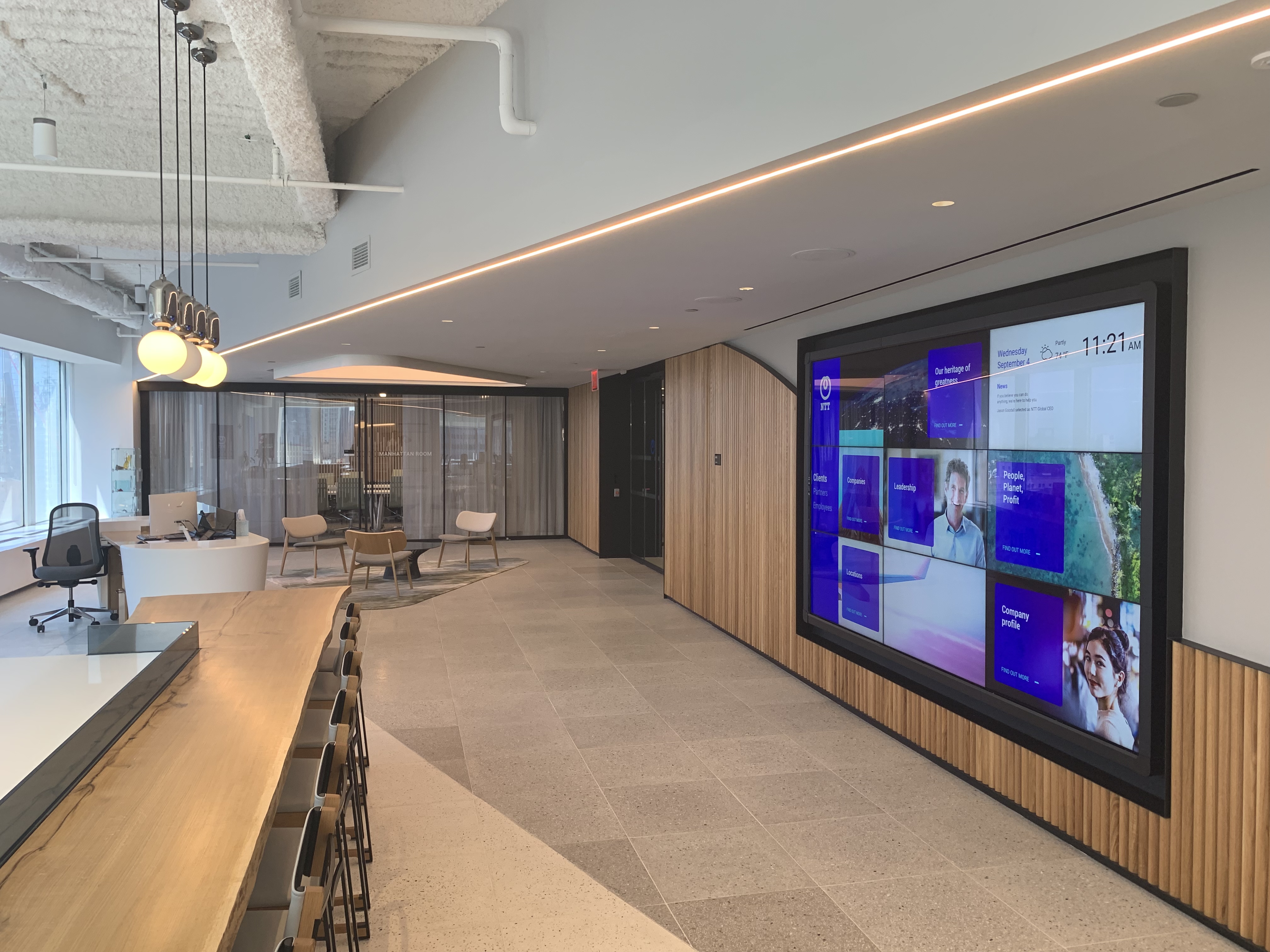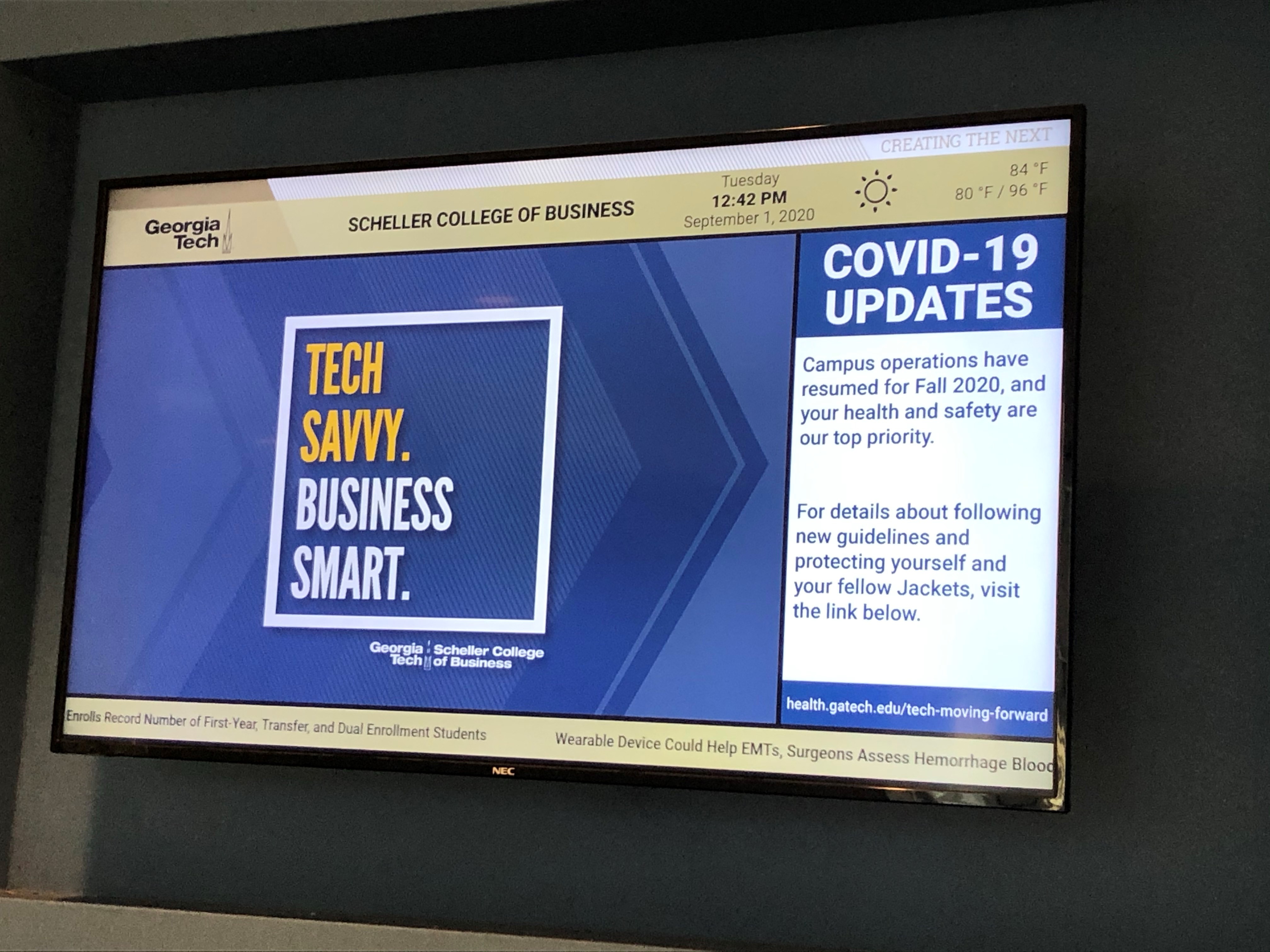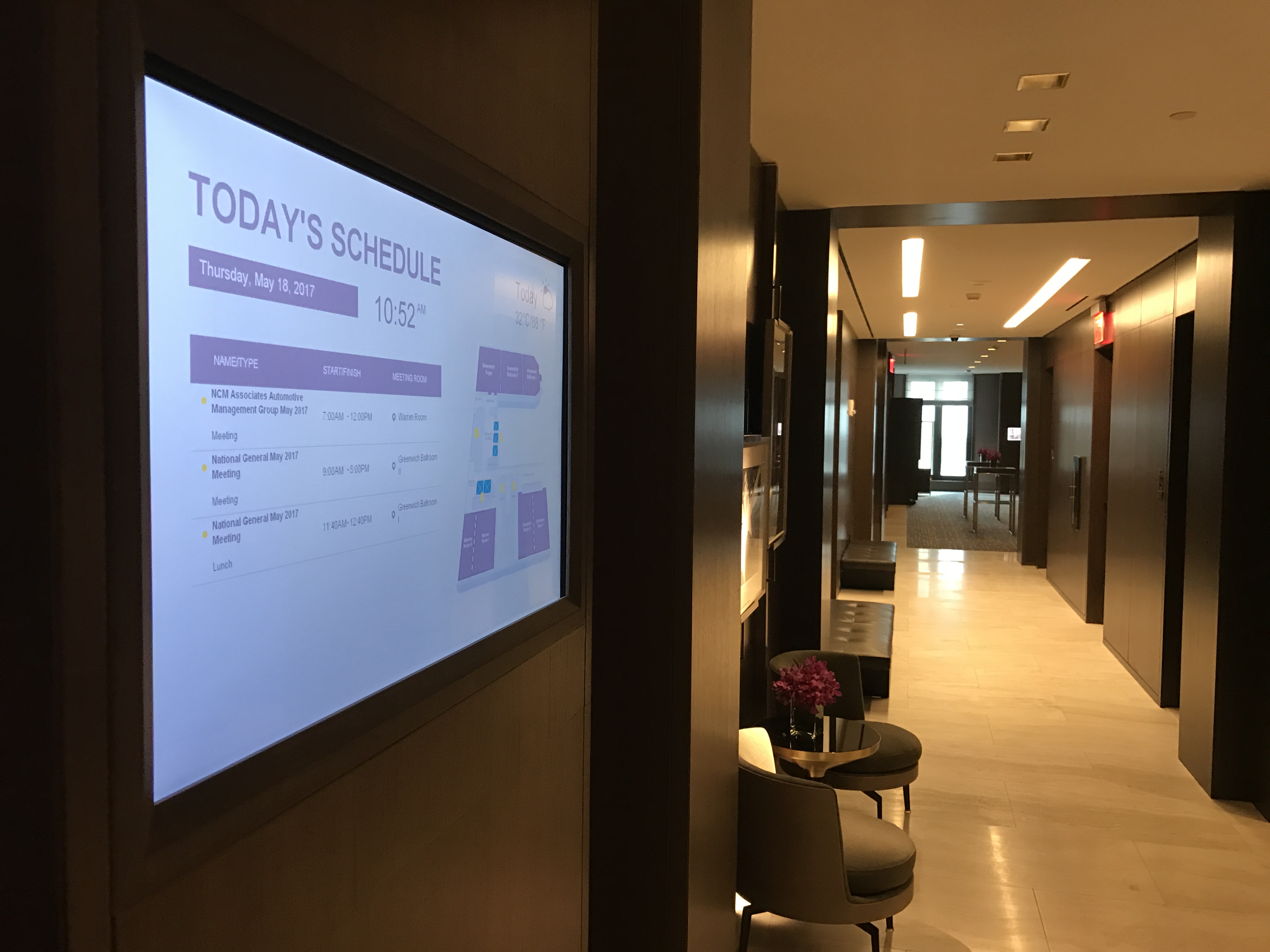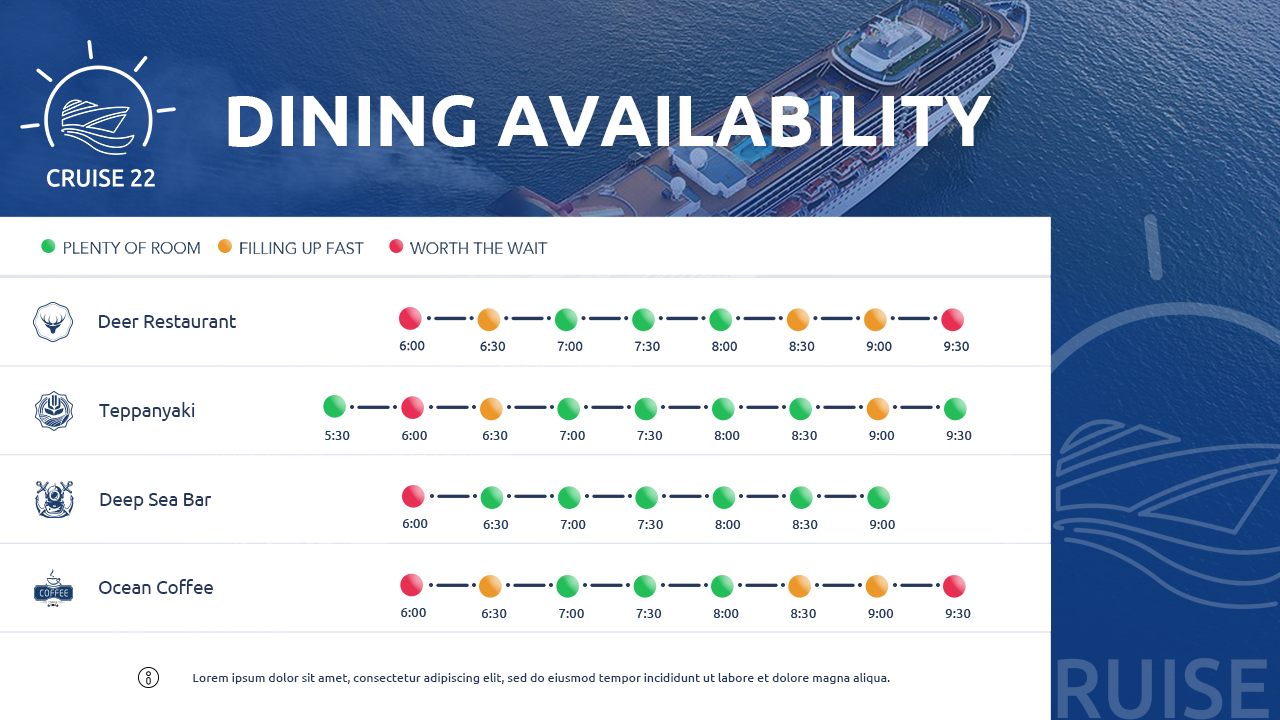Blog
Your Most Productive Employee…Your Digital Signage Displays

Don’t Buy Digital Signage Displays: Hire Them
For a successful visual communications strategy, think of deploying digital signs less like buying a bucket, and more like hiring a new employee.
I’ve spent most of my career in the field of visual communications, so naturally, I’m an evangelist for digital signage. This technology offers targeted assistance to challenging problems ranging from wayfinding, to access control, to building community across a global organization.
To my great pain, though, I also frequently hear how little value many organizations get out of their digital signage displays. Customers tell me that their previous implementations have been so difficult or time-consuming to maintain that they eventually just stopped updating them, with the screen going either static or dark.
I also see large institutions like college campuses with heterogeneous screens all deployed and managed by different departments, so visually disjointed that they look like they belong to separate institutions. I even hear about screens deployed just because they appeared on architectural drawings.
It’s hard to accuse such screens of having a low return on objective, since there was no clear objective in the first place.
All of these problems are often caused by approaching digital signage as if it is a bucket you can fill with content. If it’s no one’s job to fill the bucket, it sits empty.
If someone fills the bucket and then ignores it, it grows stale. If the bucket is loaned to someone else, they can put whatever they want in it. A bucket does its job when needed, but for the most part, sits ignored.
For a successful visual communications strategy, think of deploying digital signs less like buying a bucket, and more like hiring a new employee.
For a new hire to be successful, you need a clear job description, including minimum required competencies. You need a defined supervisor and reporting structure that can make sure the new hire is contributing as anticipated and take action if they’re not.
Finally, you need an onboarding process that will both train the new hire to perform their duties and introduce them to the other stakeholders they’ll be working with inside the organization.
The Digital Signage Displays Job Description
Digital signage can be hired to do a wide range of jobs for an organization, including optimizing operations by supporting hot-desking or room reservation; keeping employees safe by publicizing health and safety protocols, checking temperatures and mask policy compliance, and controlling access to shared spaces; making people feel welcome in a space though dynamic imagery, interactive wayfinding, and brand storytelling; and more.
If you have a digital sign on a CAD drawing for an upcoming product, and you cannot instantly say what job it’s there to do, stop. Do not install. Write the job description before proceeding; you’d never hire a new employee without knowing how they were going to support the organization. The same is true of a sign.
The tasks a sign is hired to do directly impacts every aspect of deployment, including size, placement, functionality, and network/system integration requirements. It also indicates who should be involved in the deployment and ongoing management of the sign.
Digital Signage Reporting Structure
If you’ve got a defined set of objectives for a signage deployment, consider whom an employee charged with accomplishing those objectives would report to.
For instance, communicating brand story is probably the domain of the marketing communications department. Guest relations, reception, or customer service might manage tasks like making visitors feel welcome and helping them navigate the space. HR or the C-Suite might have ownership over organization-wide communications and operations.
These are the departments that should, logically, manage the job that the digital signage is there to do. There’s an assumption that the experts in a sign’s “job” don’t have the time, the technical know-how, or the content creation skills to update its content. But with advancements in content management, intuitive and fast templates, this simply isn’t true. So how will department heads and business leaders be involved in managing the digital signage?
Hopefully, the department responsible for oversight of the signage deployment’s objectives requested it in the first place, or at least have been engaged project stakeholders from the beginning. If not, then this is another good moment to stop and reassess.
These content domain experts need to be involved as early in the project as possible. They’re the ones who know the most about the information and assets that will ultimately populate the sign – and they’re probably the best positioned to keep the content updated long term.
You should never turn on digital signage without a long-term plan for who’s responsible for supervising the content. The requirements for successful digital signage content management add up to something of a unicorn: content domain expertise, content creation skills, user experience design know-how, technical competency to update and deliver the content, and genuine interest in seeing the system’s objectives met.
In reality, your internal content management team only needs two of those qualities: domain expertise and genuine interest. The rest can be outsourced or automated with the selection of the right content management system (CMS).
Training Digital Signage to do its job
Like a good colleague, a good CMS can take a significant burden off of your internal teams. For instance, you can establish templates within the CMS that will take the graphic design burden off your internal content creators.
You can engage your internal branding experts to create these templates, and some CMS providers also offer graphic design support and pre-configured layouts at initial deployment—If you don’t have the capacity or marketing bandwidth to design templates in-house, this service should be part of your CMS requirements. By relying on a common set of templates, you ensure consistent branding across your digital signage deployments. As new signs are added, the branding experience remains consistent, even if the content comes from different stakeholders or departments.
The degree of content creation expertise your teams will need depends on the application. In many applications, the content needed is already being maintained somewhere: in calendars, floorplans, social media channels, RSS feeds, CMS systems, etc. Whenever possible, ease the burden of content creation on individual stakeholders by using APIs to pull content into your templates automatically.
You should also be able to outsource UX expertise to your CMS provider. Look for digital signage displays software that has templates designed to align with your signage’s job description.
The CMS provider you choose should already have thought through and rigorously tested the user experience design for your application. Your in-house team should never have to re-invent this wheel.
Of course, no digital signage deployment is ever truly “set it and forget it.” Digital signage is powerful precisely because it is flexible. When your needs change, you can change your signage, adding new capabilities, updating the content, or giving the signs a new “job” altogether.
This is why domain expertise and genuine interest are so important. There must be individuals within the organization who can assess whether the sign is providing all the value it can – and if it’s not, who are motivated and empowered to change things.
When you roll out your signage and software, these stakeholders should be part of the CMS training. They should have direct contact with the CMS provider in case they need to make future updates to the functionality, templates, or UX.
Your content experts should feel like the signage deployment’s boss. They are responsible for the signs’ success, because the signs support their own objectives.








